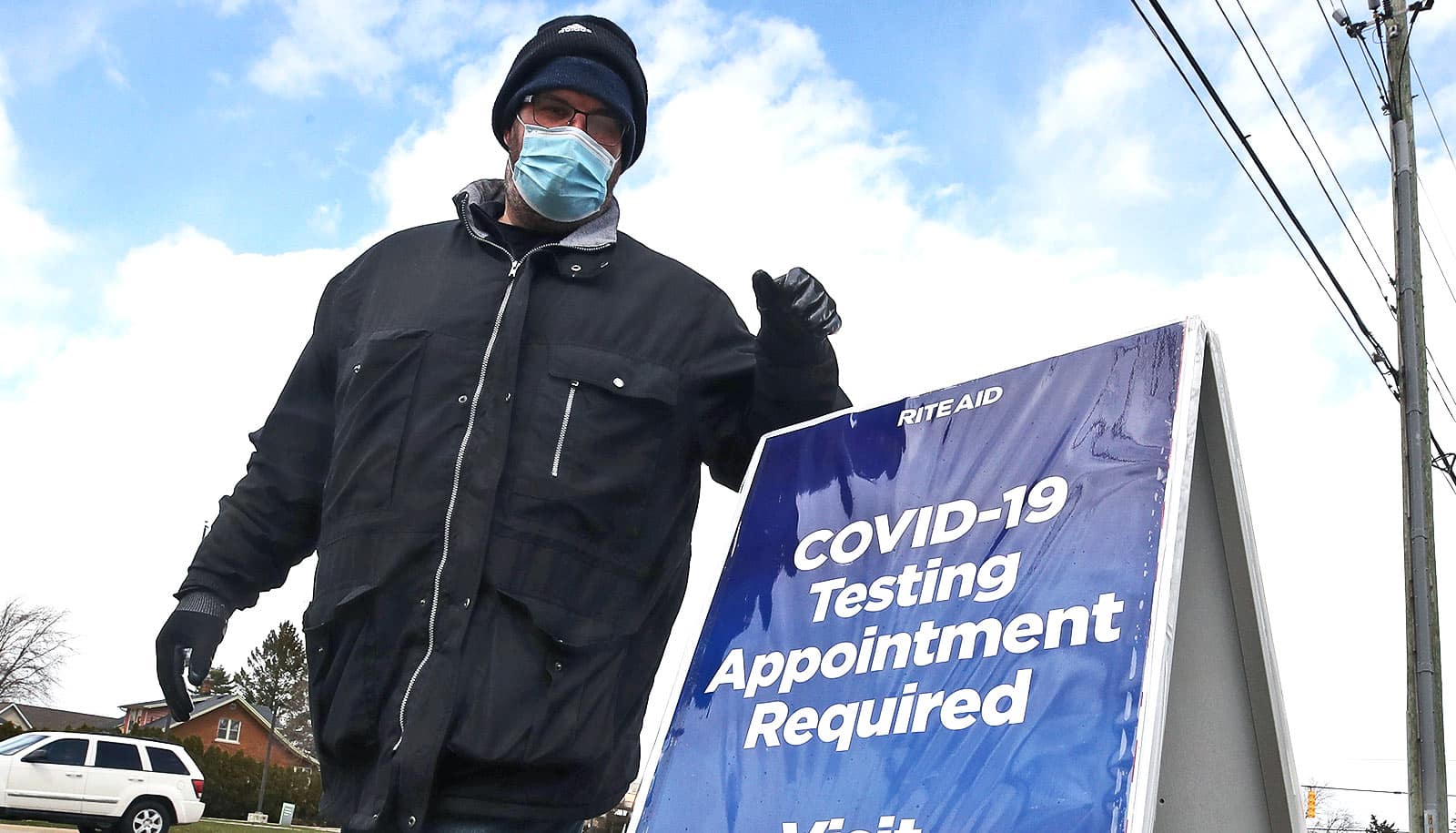Researchers are working on a test that’s comparable to a pregnancy test to give a quick visual indicator of the presence of the coronavirus in the body.
Piyush Jain was headed home from another late night in his lab when he got the word from his grad student—the rapid test they had been trying to develop for the novel coronavirus worked.
While not yet approved for commercial use, the test uses a strip comparable to a pregnancy test to give a quick visual indicator of the presence of the coronavirus in the body.
“The idea is to have a paper-based system where people can just look at it and say, yes, you have it, or not,” says Jain, a chemical engineering professor in the Herbert Wertheim College of Engineering at the University of Florida.
Jain, whose background is in pharmaceutical sciences and biomolecular engineering, has been working on improving CRISPR-based testing and applying it to a range of diseases. Long Nguyen, a doctoral student in Jain’s lab, had developed this platform for detecting prostate cancer, HIV, and hepatitis C.
“As soon as the novel coronavirus emerged, I saw an application of this technology and immediately jumped right into it,” Nguyen says. “I was super excited not only that the test worked, but also that it showed significantly higher sensitivity compared to other CRISPR-based detection technologies.”
Although researchers have not yet tested it in humans, the goal is a test that people can take at home in less than 30 minutes, eliminating the need for a trip to a health care facility. And because it identifies the virus itself, not its antibodies, Jain says the test can aid in early detection for patients with an active infection, which would help people know to self-isolate.
The disadvantage of antibody testing, Jain explains, is that it can’t distinguish if the patient had a past infection or is currently infected.
The next step is testing on human samples, then clinical trials.
The breakthrough is similar to a CRISPR test in development at the University of California San Francisco, but with modifications to the CRISPR system that make the test more sensitive, allowing it to work faster.
“We’re not developing a totally new system,” Jain says.
“The best analogy is we’re making a better engine for a car that other people are building,” he says. “When we have a better engine, we can go faster.”
Since the publication of the preprint of the study, Jain has fielded requests to collaborate from around campus, including a potential effort to develop a coronavirus vaccine.
Source: University of Florida



